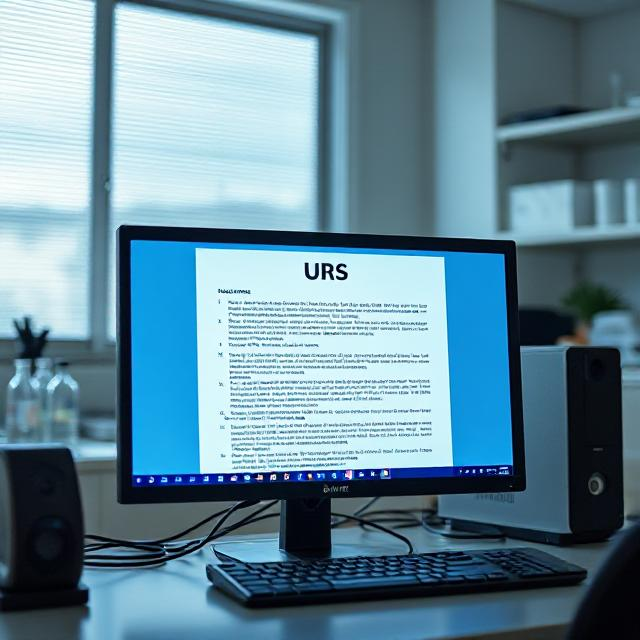In the dynamic and regulated world of pharmaceutical manufacturing, ensuring compliance with Good Manufacturing Practices (GMP) is non-negotiable. At the heart of these practices lies the importance of Computer System Validation (CSV), which ensures that all computer systems used in manufacturing and quality control are reliable, accurate, and consistent. Within this framework, User Requirements Specifications (URS) play a pivotal role as a cornerstone.
Understanding URS: The Foundation of CSV
User Requirements Specifications, or URS, are essentially documents that outline the functional, technical, sites, data integrity, requirements expected from a computer system. These specifications serve as the
foundation upon which all subsequent activities in CSV are built. In simpler terms, URS define what the system should do, how it should do it, where it should do it and the expectations surrounding its performance.
In the pharmaceutical industry, where precision and reliability are paramount, URS act as a bridge between user needs and technical specifications. They ensure that everyone involved—whether
from the manufacturing, quality control, or IT departments—has a shared understanding of what is expected from the system. This alignment is crucial for seamless integration and effective validation.
The Role of URS in CSV
CSV, or Computer System Validation, is a process designed to verify that a computer system functions as intended throughout its lifecycle. It ensures that systems are validated according to GMP standards, minimizing risks associated with data integrity, accuracy, and consistency.
At the core of CSV lies the URS. These specifications guide every step of the validation process, from design and development to implementation and ongoing maintenance. They define the
system’s purpose, functionality, and performance criteria, ensuring that all aspects of the system meet regulatory requirements.
Protecting Users and Companies: The Shield of Compliance
In addition to guiding CSV processes, URS play a critical role in protecting both users and companies. By clearly defining user requirements, URS help mitigate risks associated with system implementation. They ensure that systems are designed with the end-user in mind, taking into account potential challenges and operational needs.
Moreover, URS contribute to user training by providing a clear framework for what users should expect from the system and how to implement it. This understanding is vital for effective system utilization and
compliance. When users understand their roles and expectations regarding the system, they can operate it efficiently, and reducing the likelihood of delay in the implementation.
From a company perspective, robust URS help safeguard against regulatory non-compliance. By aligning system functionalities with GMP standards, URS ensure that companies maintain their regulatory standing. This is particularly important in the pharmaceutical industry, where non-compliance can lead to severe consequences, including fines and reputational damage.
Ensuring Data Integrity: The Bedrock of GMP
Data integrity is a cornerstone of GMP systems, ensuring that data remains accurate, complete, consistent, and reliable throughout its lifecycle. URS play an integral role in this by
defining how data will be captured, stored, and managed within the system.
Through URS, the users with the help of a CSV department can establish clear expectations for data entry, validation, and reporting. These specifications ensure that all data generated by the system meets regulatory requirements, minimizing risks of data discrepancies or inaccuracies. Additionally, URS guide the implementation of controls to prevent unauthorized access or tampering with data, further safeguarding its integrity.
For example, in a quality control laboratory using a computerized system, the URS would specify how raw data is captured, how it is validated before analysis, and how results are reported. These specifications ensure that the system maintains data integrity throughout its operations, aligning with GMP standards.
Challenges in Implementing URS
Despite their importance, implementing robust URS can present challenges for pharmaceutical companies. One common challenge is achieving a clear alignment between user needs and technical
specifications. Miscommunication or misunderstanding between users and technical teams can lead to incomplete or ambiguous URS, complicating the validation process.
Another challenge is keeping URS updated as systems evolve and new functionalities are introduced ( e.g. electronic signature, roles, … ). Over time, changes in business processes, regulatory requirements, or technological advancements may render existing URS obsolete. Failing to update URS can result in gaps between system capabilities and user expectations, compromising compliance and efficiency.
Implementing a good URS can sometimes be constrained by the equipment itself. Unfortunately, some suppliers do not provide robust and GMP-compliant solutions. Moreover, there may be no viable alternatives available in the market for specific tasks. In such cases, the URS may require adjustments. However, this process prepares both users and the validation team for a challenging implementation that demands mitigation strategies and meticulous scrutiny of the equipment’s validation and operation throughout its lifecycle.
Conclusion
In conclusion, URS are a cornerstone in CSV processes within GMP systems. They serve as the foundation for ensuring that computer systems meet user expectations, regulatory requirements, and quality standards. By guiding CSV activities, URS help protect both users and companies from risks associated with system non-compliance.
Furthermore, robust URS contribute significantly to maintaining data integrity, a critical aspect of GMP compliance. Through clear definitions of system functionalities and performance criteria, URS ensure that all data generated by the system is accurate, reliable, and consistent.
While implementing URS presents challenges, such as aligning user needs with technical specifications and keeping them updated, these can be mitigated through effective communication and
regular reviews. By prioritizing the development of comprehensive and precise URS, pharmaceutical companies can strengthen their CSV processes, ensuring continued compliance with GMP
standards and delivering high-quality products to patients worldwide.
In essence, URS are not just documents but integral components that underpin the success of GMP systems in the pharmaceutical industry. Their proper development and implementation are
essential for maintaining regulatory compliance, operational efficiency, and most importantly, patient safety.




